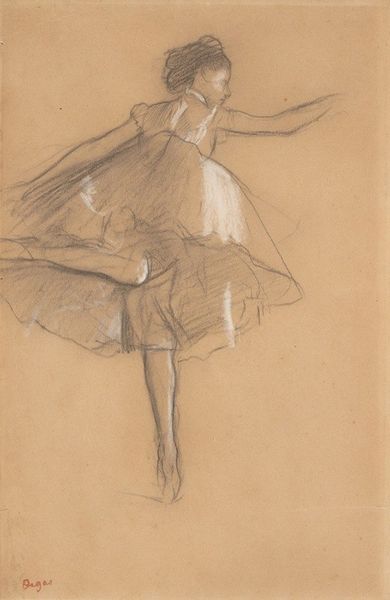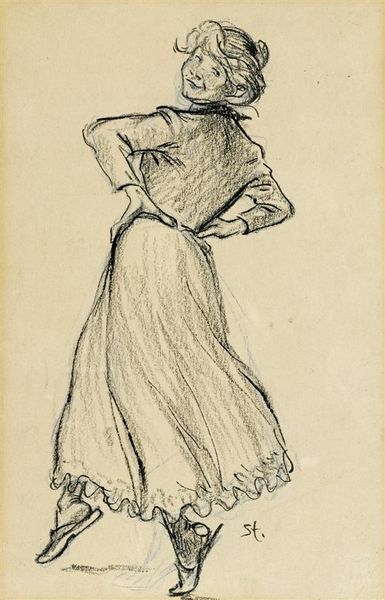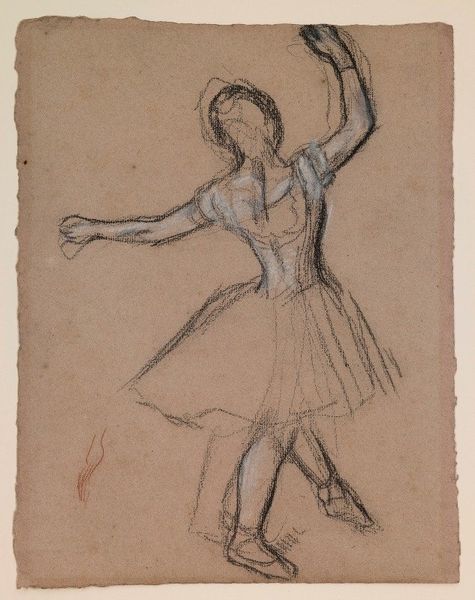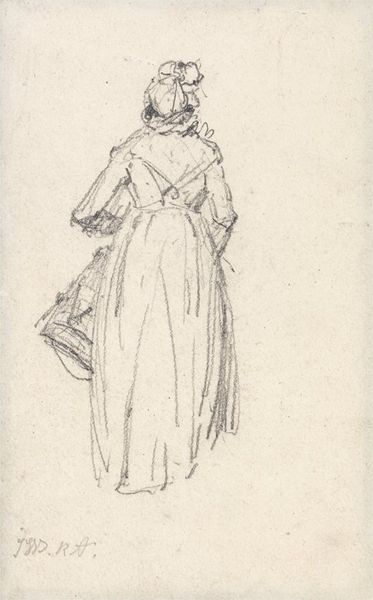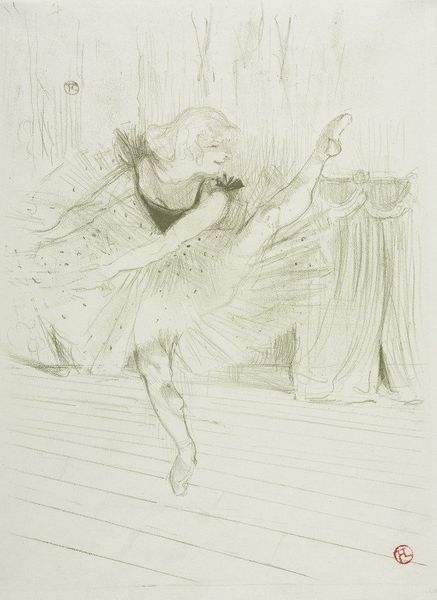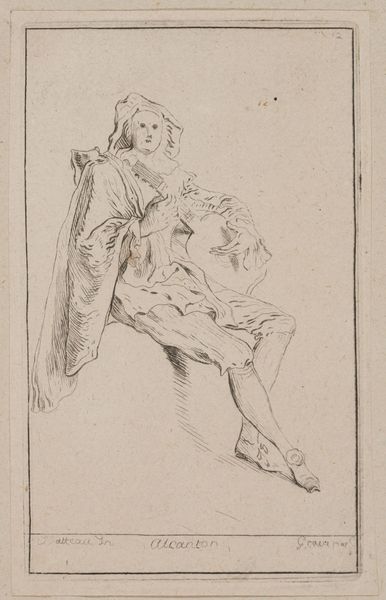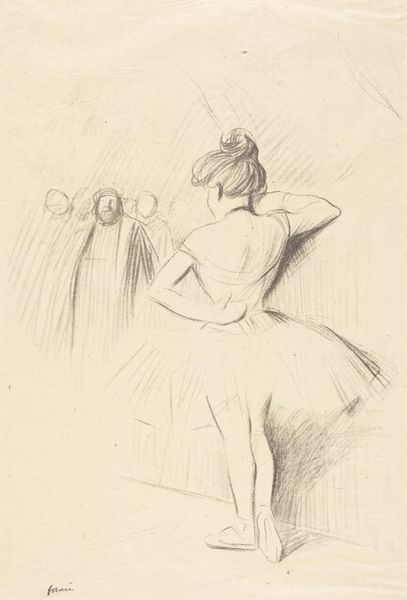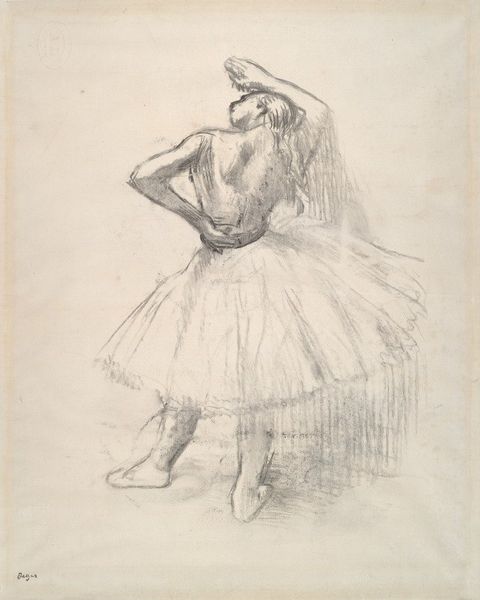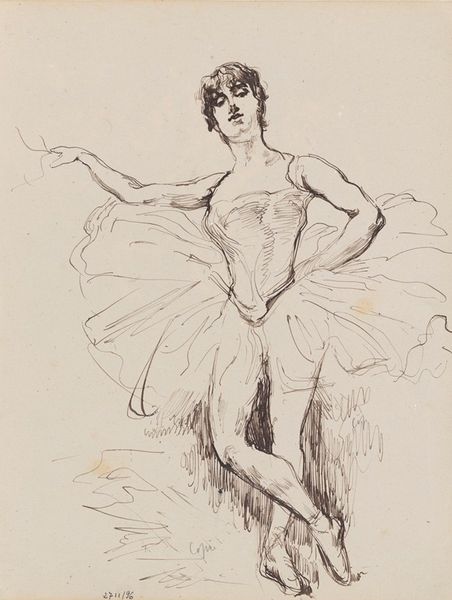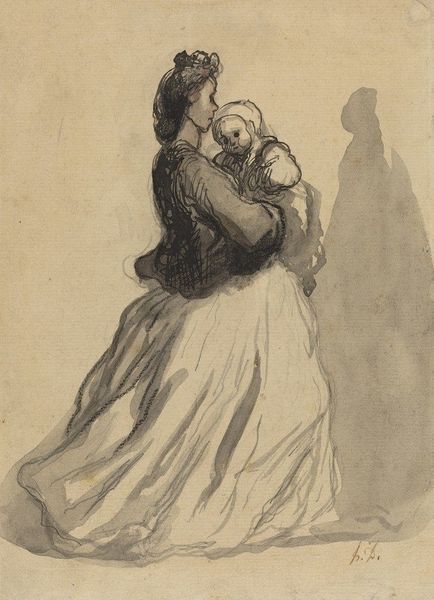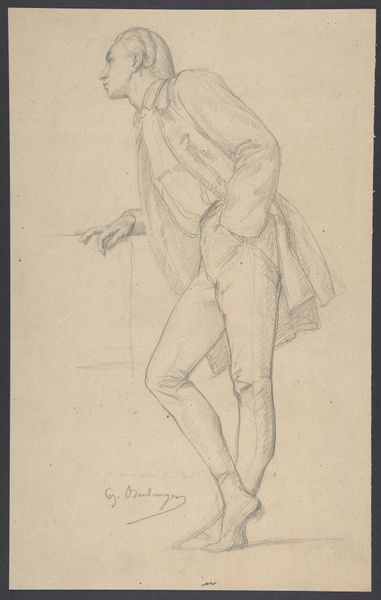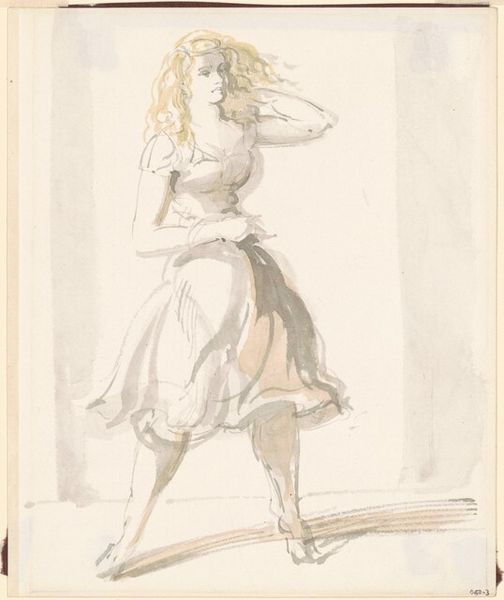
drawing, graphite
#
portrait
#
drawing
#
figuration
#
romanticism
#
graphite
Copyright: Public Domain: Artvee
Curator: Honoré Daumier's drawing, "Dancer," sketched with graphite, presents a figure caught in a moment of graceful motion. What strikes you upon first viewing? Editor: The sheer dynamism. The lines convey such swift movement. The dress, especially, is almost a blur of fabric, frozen mid-swirl. Curator: Indeed. Consider the material implications. Daumier, a master of observation, was deeply embedded within Parisian society, producing lithographs that often critiqued its structures. Could this drawing, seemingly focused on beauty and motion, subtly address the societal role and the laborious training demanded of dancers? Editor: I see your point, but my eye is drawn more immediately to the formal elements. Notice the composition, how the dark, dense lines describing the dress contrast with the lighter strokes used for the dancer’s upper body. It centers our focus, creating an elegant balance. Curator: Agreed, the graphite marks and the very process of drawing lend themselves to swift execution and capture ephemeral movement. Yet Daumier, working often under the constraints of newspaper production deadlines, would have been acutely aware of the dance industry as a whole: from costume production and set design, the very materiality of spectacle that enables this singular ‘moment’ of graceful dance. Editor: Interesting, considering Daumier also engages with themes rooted in romanticism with this figure. Despite the swift execution, the figure's expressiveness has a potent energy to it. And though roughly rendered, it captures her stance, an ideal. Curator: But whose ideal? To Daumier’s contemporaries, ballet dancing was seen simultaneously as graceful expression, and the exploitation of women, some as young as nine years old, under grueling rehearsal hours and performance demands. So perhaps, in observing these visible formal techniques we begin to consider an additional layer of critique inherent within his work. Editor: That contrast adds to its intrigue, truly. So much to see—both from the perspective of the eye and from the perspective of lived experiences. Curator: Absolutely. Reflecting upon Daumier’s process—a convergence of media, and observation alongside industry awareness—enables a deeper understanding of "Dancer" itself. Editor: A final pirouette, then, connecting artistry with context, enhancing how we observe both process and production within the framework itself.
Comments
No comments
Be the first to comment and join the conversation on the ultimate creative platform.
